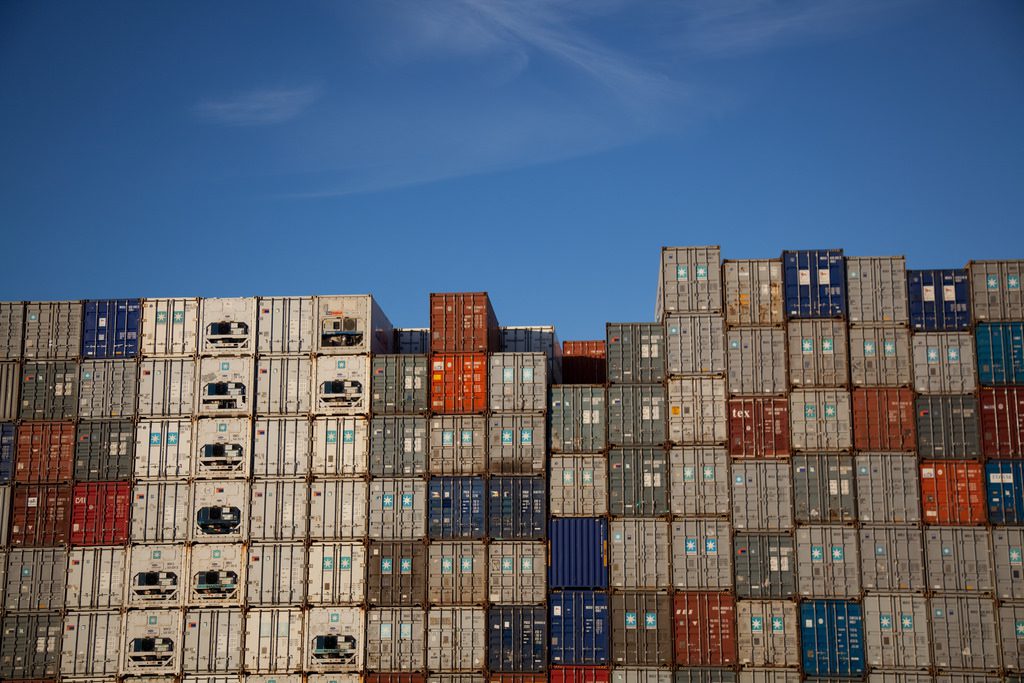Credit: russelstreet/Flickr
By Gibraltar Shipping
Tim Britton is CEO of Spinnaker, specialised in the leasing, sale of new and used containers for shipping and storage purposes. Tim talks to us about how Spinnaker has over 60 shipping depots strategically located around the world, satisfying the demand for containers at any point of the supply chain.
 Please tell us about your main responsibilities as CEO of Spinnaker:
Please tell us about your main responsibilities as CEO of Spinnaker:
Like many business leaders of a small business I wear many hats. My primary concern is to help the team of talented people, who make up Spinnaker, to be as successful as possible.
That ranges from ensuring we have the correct capital in place to supply inventory to our sales network, bringing in new portfolios of containers for us to manage, through to simple day to day advice and coaching.
What does one have to be aware of when purchasing a container?
Containers, if manufactured correctly using quality suppliers and materials, will last for 13-15 years in maritime use and at least another 10 years in the secondary rental and storage markets.
We use highly specialised quality control professionals to ensure what we buy and deliver that working life. When we acquire used container portfolios we look at who initially built the containers and what quality management process was in place. We ultimately also inspect a statistically significant sample.
How important is regulation when purchasing and trading with containers?
The ISO regulations supported by the series approval via the major Classification Societies gives a strong global basis of regulation.
We purchase from a few key manufacturing part-ners whose quality reputation we rely upon, CXIC and Singamas. As I said you don’t get what you expect, you get what you inspect and we always do online physical inspections. We reject container floors more than any other single component and that is the reflection of how quality is not just meeting the base regulatory minimums.
What are the main challenges in the containerised freight market?
Vessel overcapacity is the biggest challenge to every participant in the container shipping market. While state owned shipyards continue to build ships at below cost, ship investors are incentivised to buy new ships, even at the expense of their prior investments. The shipping lines have also shown lemming like pas-sion for chasing freight rates over the cliff. If they continue to focus on filling vessels and not maximising voyage profitability the cycle will continue.
What type of container is most popular and why?
The 20’ standard dry box is the global workhorse for all raw material movements. 40’ hi-cube are used transpacific and on all major long haul routes for packaged and consumer goods that will cube out before they reach their maximum gross payload. 40’ standard height boxes are of less demand as they cost the same to move by train or truck as a 40’ hi-cube with 11% more space for cargo carrying.
We continue to see a race in the construction of megaships and TEU capacity. Do you expect this to continue?
I think we have finally seen the nadir of the megaships. I think the market currently for major east-west trades from Asia to Europe and the Americas is not growing at a pace that re-quires larger vessels. The US land side infrastructure already cannot cope with the full loads of the Maersk E-Class ships. The system is therefore limited by port-side handling ability for the megaships and so we see it being optimised around 12 – 14,000 TEU vessels, being large enough to offer economy of scale while offering port call flexibility.
Spinnaker has a good worldwide network. Do you have plans to enter new markets over the next five years?
We have been successfully growing our Asian network over the last 15 years and we continue to see more opportunity there than in say sub-Saharan Africa and South America. The Middle Eastern trades offer some interesting opportunities if Iran is allowed to continue its reentry into the global markets.
How complex is the recovery process of a container if affected by a company that has entered into receivership?
We have successfully recovered most of the 1,400 units we had on lease to Hanjin at its demise and we have just entered into an agreement to take over another 15,000 containers which banks had leased directly to Hanjin.
The short answer is that it is complex, it’s also hard work but we are experienced at resolving the many chal-lenges of negotiating the release of those containers which were affected by the bankruptcy and moving them to other markets for leasing or selling into the secondary markets.
Please talk to us about your memorable shipping experience and your favourite ship:
My most pure fun shipping experience was probably organising a trial shipment of French table wine using flexitanks from Bordeaux to Reunion Island in the Indian Ocean and then going to Reunion for a week to supervise the successful discharge. As a former US Lines Sales Rep the, at the time, record breaking 4,200 TEU so called jumbo “Econ” vessels that US Lines started their Round the World service under Malcolm McClean will always have a place in my heart. I think there are only two still sailing and one is the former American Nebraska, which was one of the last to enter service before the demise and bankruptcy in 1986. My first job after US Lines was working for a leasing company Trans Ocean Leasing, locating and negotiating the return of bank owned containers. 30 years lat-er that experience has been very useful!
As an industry we seem to have not learned how to avoid over leveraging of vessels and shipping operations.
Gibraltar Shipping is Gibraltar’s premier maritime portal, featuring key interviews, updates and news. This story is republished with permission.

 Join The Club
Join The Club




 Please tell us about your main responsibilities as CEO of Spinnaker:
Please tell us about your main responsibilities as CEO of Spinnaker:






